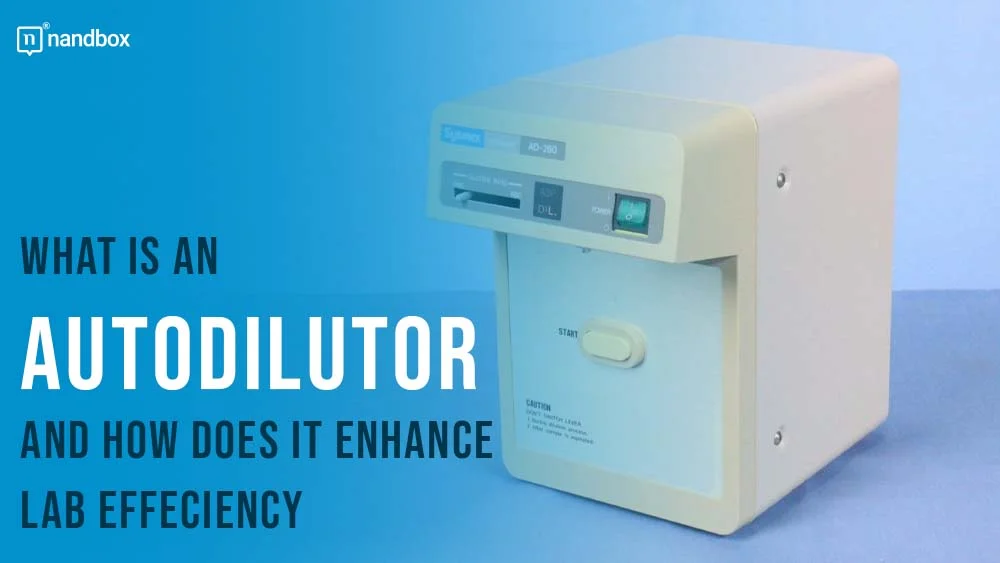In today’s fast-paced world of scientific research, precision and efficiency are critical to the success of any laboratory. Autodilutors, automated systems designed to perform precise and accurate dilutions of samples, have become indispensable tools for enhancing lab productivity.
Whether you are involved in microbiology, chemistry, or pharmaceutical research, an Agilent autodilutor can significantly improve the workflow, reduce human error, and save time. This blog post delves into what an autodilutor is, its role in the laboratory, and how it contributes to greater efficiency and accuracy.
What is an Autodilutor?

An autodilutor is an automated instrument used to prepare accurate and precise dilutions of liquid samples by systematically dispensing specific volumes of solutions. It eliminates the need for manual dilution, which involves transferring solutions from one vessel to another using pipettes—a process prone to human error. Autodilutors are programmable, allowing technicians to perform multiple dilution steps with minimal intervention.
These devices are often integrated into other systems, such as spectrophotometers or liquid handling robots, and can perform serial dilutions (multiple progressive dilutions) and fixed-ratio dilutions.
Key Components of an Autodilutor
- Dispensing Modules: These are responsible for transferring precise volumes of liquids. Depending on the model, they may use syringes, peristaltic pumps, or valves.
- Touchscreen Interface or Software Control: Many autodilutors have user-friendly control panels or software that allows customization of dilution protocols.
- Sample Racks or Plates: Some models are equipped with racks or plate holders to accommodate multiple samples.
- Integrated Sensors: Sensors monitor flow rates, detect clogs, or ensure the correct volume is dispensed.
- Automation Features: Many autodilutors can connect to laboratory information systems (LIMS) for tracking and documenting dilution processes.
Types of Autodilutors
- Single-Channel Autodilutors: These are suitable for laboratories with low-throughput needs or those focused on small-scale experiments.
- Multi-Channel Autodilutors: Ideal for high-throughput settings, these models can perform multiple dilutions simultaneously, handling hundreds of samples in one run.
- Modular Autodilutors: These systems can be customized and integrated into existing laboratory setups, offering flexibility for various research needs.
The Importance of Precise Dilution in Laboratories
In many scientific processes, sample concentrations must be adjusted accurately to ensure valid results. Some key applications include:
- Clinical laboratories: Dilution of blood samples for diagnostics or preparation of reagents for assays.
- Pharmaceutical laboratories: Ensuring accurate drug concentrations during the formulation and quality control processes.
- Food and environmental testing: Preparing samples for contamination testing and other analyses.
- Chemical research: Working with substances that require exact concentrations to ensure safe and reproducible results.
Manual dilution methods carry the risk of inconsistent results due to human error, which can impact the reliability of experiments and analyses. This makes autodilutors essential for laboratories requiring high precision and repeatability.
How Autodilutors Enhance Laboratory Efficiency
Increased Accuracy and Precision
Autodilutors use programmed protocols, ensuring that each dilution is consistent. This minimizes variations and increases the reliability of results across multiple experiments.
Example: In pharmaceutical quality control, even small errors in dilution can affect product consistency, making accurate measurements critical for compliance with industry standards.
Time-Saving Automation
Manual dilution is time-consuming, especially when handling multiple samples. Autodilutors significantly speed up this process by automating repetitive tasks.
Impact: In high-throughput environments like clinical laboratories, technicians can focus on more complex tasks instead of performing routine dilutions, improving overall productivity.
Reduction in Human Error
Human error is a common challenge in laboratories, especially with complex dilution protocols. Autodilutors follow precise instructions, reducing the chances of mistakes.
Example: Laboratories that rely on manual dilution often encounter concentration inconsistencies due to pipetting errors, which can compromise the validity of test results.
Improved Workflow Efficiency
Autodilutors integrate seamlessly with other instruments, such as analyzers or robotic systems, to streamline laboratory workflows. Many models also support batch processing, allowing multiple samples to be diluted at once.
- Case Study: In environmental testing, batch dilution of water samples saves hours of labor, enabling technicians to process more samples within shorter timeframes.
Cost-Effectiveness
While autodilutors require an upfront investment, they reduce costs over time by minimizing the need for rework caused by dilution errors. Additionally, they lower reagent waste by dispensing only the required volumes.
Traceability and Data Management
Many autodilutors connect with laboratory information systems (LIMS), automatically documenting dilution protocols and results. This helps in maintaining accurate records for audits and compliance with regulatory standards.
Applications of Autodilutors
-
Clinical Laboratories
- Preparation of blood, plasma, or serum samples for diagnostic tests.
- Dilution of reagents used in enzyme-linked immunosorbent assays (ELISA).
-
Pharmaceutical Industry
- Preparing drug formulations for testing.
- Conducting dissolution tests and concentration analysis during quality control.
-
Food and Environmental Testing
- Dilution of water, air, and food samples for contamination screening.
- Microbiological testing of products for bacterial or chemical contamination.
-
Chemical and Academic Research
- Accurate preparation of solutions for experiments requiring strict concentration controls.
- Serial dilutions for enzyme kinetics or molecular biology protocols.
Factors to Consider When Choosing an Autodilutor
- Throughput Requirements: Choose a multi-channel model for high-volume testing or a single-channel version for smaller-scale research.
- Integration with Other Instruments: Check if the autodilutor can connect with your existing equipment, such as spectrophotometers or analyzers.
- Ease of Use: Look for user-friendly interfaces or software with customizable protocols.
- Maintenance and Support: Consider the availability of technical support and the frequency of maintenance required for the instrument.
- Budget: Evaluate the cost-benefit ratio, balancing upfront costs with long-term savings in labor and reagent use.
Challenges and Limitations
Despite their advantages, autodilutors also come with a few challenges:
- Initial Cost: The upfront investment can be high, especially for advanced models.
- Maintenance Requirements: Regular calibration and cleaning are needed to prevent malfunctions.
- Training Needs: Laboratory staff may require training to operate the device effectively.
- Compatibility Issues: Not all autodilutors integrate easily with other instruments, which could limit their use in certain workflows.
Conclusion
Autodilutors are a game-changing tool in modern laboratories, offering significant improvements in efficiency, accuracy, and productivity. By automating the dilution process, these instruments reduce human error, save time, and enhance workflow efficiency. From clinical diagnostics to pharmaceutical production, autodilutors play a crucial role in ensuring precise and reliable results across various applications.




